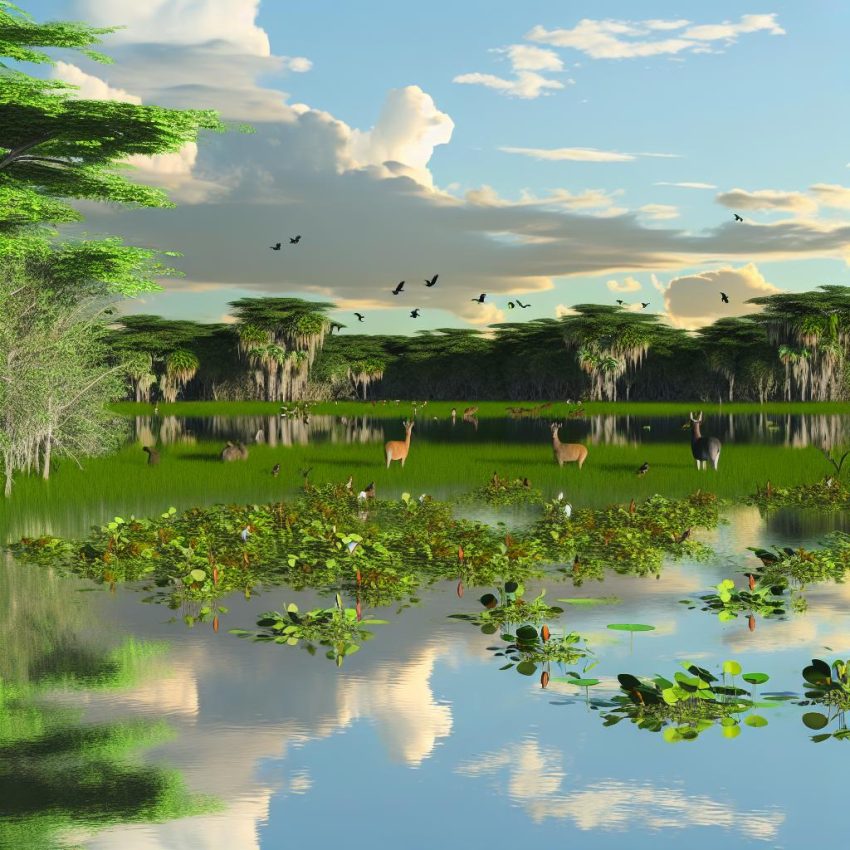Introduction to the Iberá Wetlands
The Iberá Wetlands, known as Esteros del Iberá, are a vast and intricate network of marshes, lagoons, and swamplands located in the northeastern section of Argentina, specifically within the province of Corrientes. Covering more than 13,000 square kilometers, this unique ecosystem ranks among the world’s most significant wetland regions. Its complex environment offers a haven for diverse biological and ecological phenomena.
Geography and Climate
The geographical characteristics of the Iberá Wetlands are notably shaped by natural factors. These wetlands do not rely on any single major river; instead, they are nourished by rainfall and a few minor river systems that navigate the region. This rainfall primarily contributes to the establishment of a diverse landscape featuring flooded grasslands, tranquil lakes, and dynamic seasonal marshes. The climate adds another layer of intricacy to the ecosystem. The region experiences a subtropical climate marked by hot, humid summers, contrasted with mild winters. Despite the relatively even distribution of precipitation throughout the year, the heaviest rainfall typically occurs during the summer months.
Biodiversity
Biodiversity is one of the hallmarks of the Iberá Wetlands. This ecosystem boasts an impressive array of species, including many that are endemic or threatened, reflecting the wetlands’ significance to global biological diversity. Specifically, the area supports over 350 bird species, 125 fish species, and countless mammals, reptiles, and amphibians.
Among the mammalian population, the marsh deer and the capybara are particularly prominent. The capybara holds the distinction of being the world’s largest rodent, while the marshes also serve as a sanctuary for the endangered maned wolf and the elusive neotropical otter. Birdlife is equally abundant, with birdwatchers often reveling in sightings of the distinct southern screamer, the agile black-collared hawk, and the vibrantly-colored jabiru stork.
Reptiles and amphibians add additional layers to the wetlands’ diversity. Notable residents include the resilient yacaré caiman and the imposing green anaconda, which happens to be one of the largest snake species globally.
Conservation Efforts
The ecological significance of the Iberá Wetlands has led to various conservation endeavors aimed at preserving this vital habitat. A substantial portion of the wetlands is encompassed within the Iberá Provincial Reserve, which is managed with a dual focus on sustainable development and environmental conservation. Such efforts ensure that human interaction with the area minimizes ecological disruption.
Diverse international organizations have joined these efforts, contributing to projects designed for ecological restoration. One primary aim of these projects is to reintroduce native species that have seen dwindling populations or extirpation. Success stories include the reestablishment of the giant anteater and the vibrantly plumaged red-and-green macaw. Such initiatives mark a significant step toward restoring ecological balance within the wetlands.
Visiting the Iberá Wetlands
The Iberá Wetlands are increasingly gaining attention as a destination for eco-tourists seeking a pristine natural environment immersive experience. Those who visit can indulge in activities that allow them to connect with the environment, such as wildlife watching, canoeing through scenic watercourses, and hiking paths that wind through natural landscapes. Guided tours led by local communities offer visitors enriched insights into the unique flora and fauna of the region, further enhancing their appreciation for this ecological treasure.
For those interested in visiting the Iberá Wetlands, planning with the aid of local tourism websites and conservation organizations is advisable. These resources provide comprehensive information on travel options and activities available within the wetlands. Such initiative also emphasizes the importance of understanding and respecting this delicate ecosystem, ensuring its preservation for future generations to enjoy. Anyone interested in exploring more about traveling to the Iberá Wetlands can access additional information through dedicated resources. Learn more about travel options.

